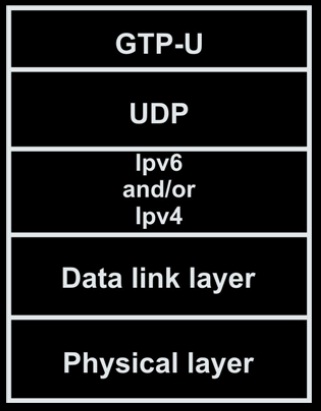S1 interface – A Single Interface between LTE RAN and evolved packet core
The S1 interface is the interface between the LTE RAN and evolved packet core. S1 interface protocol stack is described in Figure.
S1 performs the following functions:
- S1-UP (user plane)
- S1-CP (control plane)
LTE S1-UP (user plane)
The S1 user plane external interface (S1-U) is defined between the LTE eNodeB and the LTE S-GW.
The S1-U interface provides non guaranteed data delivery of LTE user plane Protocol Data Units (PDUs) between the eNodeB and the S-GW.
Transport network layer is built on IP transport and GTP-U. UDP/IP carries the user plane PDUs between the eNodeB and the S-GW. A GTP tunnel per radio bearer carries user traffic.
The S1-UP interface is responsible for delivering user data between the eNodeB and the S-GW.
The IP Differentiated Service Code Point (DSCP) marking is supported for QoS per radio bearer.
LTE S1-MME (control plane)
The LTE S1-MME interface is responsible for delivering signaling protocols between the eNodeB and the MME.
S1-MME interface consists of a Stream Control Transmission Protocol (SCTP) over IP and supports multiple UEs through a single SCTP association.
It also provides guaranteed data delivery. The application signaling protocol is an S1-AP (Application Protocol).
The LTE S1-MME is responsible for Evolved Packet System (EPS) bearer setup/release procedures, the handover signaling procedure, the paging procedure and the NAS transport procedure.
LTE Transport network layer is built on IP transport, similar to the user plane but for the reliable transport of signaling messages SCTP is added on top of the Internet Protocol.
S1 Interface – A Single Interface Between LTE RAN and Evolved Packet Core
The S1 interface in LTE serves as the communication link between the Radio Access Network (RAN), specifically the eNodeB (evolved NodeB), and the Evolved Packet Core (EPC). It plays a crucial role in connecting the user plane and control plane for seamless communication across the network. The S1 interface is split into two parts: the S1-U (User Plane) and S1-C (Control Plane).
S1-U: This part of the interface handles user data traffic. It connects the eNodeB to the Serving Gateway (SGW) and is responsible for the transmission of user plane data, such as internet or voice traffic, between the UE and the core network.
S1-C: This part manages control plane signaling between the eNodeB and the Mobility Management Entity (MME). It handles tasks like session management, mobility management (such as handovers), and security procedures. The S1-C ensures that the control messages are exchanged to maintain and manage active sessions for users.
The S1 interface is fundamental for the coordination of the LTE network, enabling the seamless transfer of data and signaling messages between the radio access network and the core network, ensuring connectivity, mobility, and efficient data delivery across the system.
